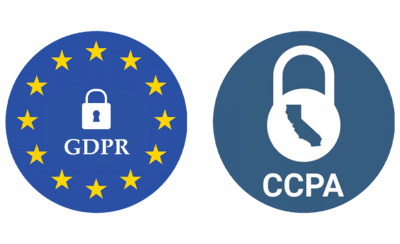The 8 biggest pain points for HR when building a mental well being culture

Want to make your company THE place to work at? All you gotta do is CARE.
Easier said than done.
The importance of building a mental wellbeing culture
The importance of building a strong mental wellbeing culture in your organisation should be obvious but it is always good to go over the benefits.
Employees with mental health support in their company tend to experience less stress which positively impacts productivity, reduces absenteeism and turn over, boosts moral, it creates a positive work environment and promotes open communication which in turns foster creativity and innovation. Benefiting both the individual and company’s growth in time.
II What are the biggest pain points in building a mental well being culture?
The role of Human Resources in creating a strong mental well being culture in the organization is essential and multi faceted. It requires a lot of energy, time and training. Additionally, it is a huge responsibility on top of all the others that falls onto the lap of the HR team.
Implementing policies is not always a walk in the park for HR department, who have to deal with different type of challenges. We have listed the most common ones here.
1. Stigma and Awareness
While mental health is being addressed more and more, some people still see mental health issues as taboo and associate them with a sign of weakness that needs to be kept private, making seeking help more difficult.
One of the main role of HR teams is “simply” to destigmatize mental health issues through open dialogue, education and trainings. One of the clients of ours started to destigmatize mental health in the organisation by conducting webinars and engaging mid and top level managers to participate.
2. Lack of Resources and Training
A strong Mental health and well being culture is not just built on conversations. There is a real need for resources and expert trainings to create a safe and fruitful environment for a team.
It is crucial for the HR team that the organisation invest sufficient resources in mental health awareness and resources to see real impact.
Finding relevant resources and experts is something that takes time and requires building and nurturing a network of professionals. The easier and more professional way is to outsource these services to a professional platform that has loads of experience engaging employees and offering the services that they appreciate.
3. Measuring Impact and Effectiveness
Once a campaign or action is launched, some people might move on to the next point to tackle on the agenda, forgetting about a crucial part: measuring the impact and effectiveness of the campaign. For each actions, the HR team should establish clear metrics and KPI through surveys, engagement rates and feedback to identify trends and take appropriate actions in the future.
Some service providers already have also such measuring tools built-in, the easiest is to choose these. If the tools are not built in, one can also use pulse surveys and just an external consultant to run such evidence employee surveys once in a while.
4. Balancing Confidentiality and Support
Creating a safe space for staff to feel secure enough to open up all the while being able to ensure confidentiality and support is a difficult equilibrium to reach for HR staff that is not always trained to handle mental health challenges. That is why while training is essential, having clear policies to protect confidentiality and compliance with legal requirement is equally important.
There are activities which are meant to engage all publicly – such as webinars, training events, case studies – and then support which has to stay anonymous, such as therapy sessions. The best solution would be if an HR organisation or even accounting would not have any access to who is using such services. That will warrant a good usage of such support tools and services also by employees.
5. Integration with Overall HR Strategy
The mental health strategy of a company should be an integrated part of the overall strategy of every company and not just a side project as it impacts every area of productivity and growth of the business.
That is why the mental health program/policies should be presented to the whole team, easily accessible to all at all time, and responsibilities should be clearly assigned amongst the different leaders and managers. Best if such mental wellbeing aspects are also part of KPIs to monitor, and pursue by the teams. Then it will become a wider initiative supported from top down.
6. Overcoming Budget Constraints
Budget constraints is a challenge for every company and departments. In companies where mental health is not a priority, it is easy to cut corners and put pressure on HR staff to deliver without the right resources and tools.
It is also part of the HR role to advocate for mental health as a priority investment through demonstrating long term benefits by using clear data, KPIs and research. Our own research shows that investing into mental wellbeing programs renders many benefits for the company, but for a CFO likely Return-On-Investment is one of the key metrics. In mental wellbeing, ROI is high, ranging between 6-8x in our own experience.

7. Engaging Leadership and Building Buy-In
The HR team can work as hard as they can, if the leadership fails to embrace the campaigns, projects or policies it will be very difficult to create momentum. Senior leadership need to be onboard with the mental health culture and understand the ROI of investing in well being from day one as they will then be the ones leading by example.
Fortunately, many senior leaders are aware and support mental wellbeing initiates, as they themselves are exposed to a number of stressors and some of them have been experienced burnout in their career. But even if the leadership is not vocal about investing into mental wellbeing, external guest and motivational speakers can be an option.
8. Creating a Supportive Environment
Building a mental health culture is not something that is done in a day. It takes time, patience and consistency. It also does not just mean having resources to offer when someone is doing poorly. It actually has a lot more to do with preemptive measures such as promoting work life balance and flexible working hours, better leave policies, safe and ergonomic workspace and tools, creating a culture of inclusivity and an overall positive and supportive environment to work in.
It may sound vague and complex task. To addess this challenge, Siffi has created an Mental Wellbeing Strategy Cheat Cheet for HR that you can download HERE
This will help to plan your steps into a build-out of proper mental wellbeing culture.

So if the HR department supports your employees, have you thought about who supports your HR?
One of our role is to support HR teams in caring for their employees by helping them prioritise relevant tasks and projects, implement them step by step, monitor and measure the results.
From drafting a strategy to assigning responsibilities and timelines, putting together management training, encouraging “lead by example” behaviours, finding the right resources and fighting mental health stigma.
Want to know more about how Siffi is helping organisations? Check out our services
Recent Posts
 mental well-being and coaching services
mental well-being and coaching services 

